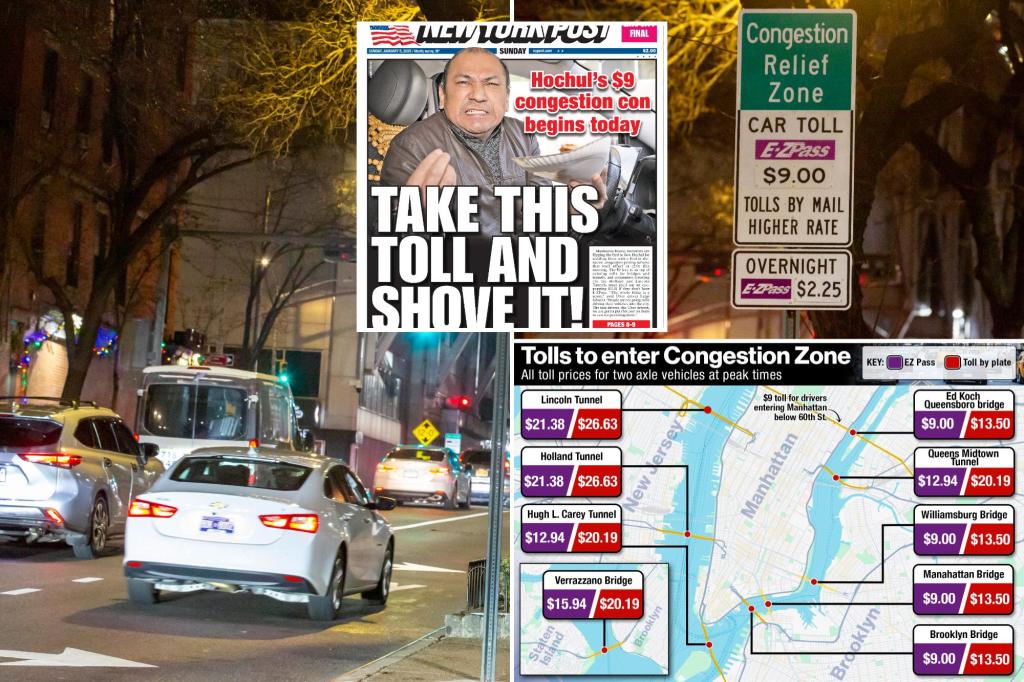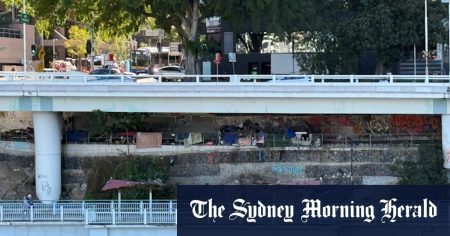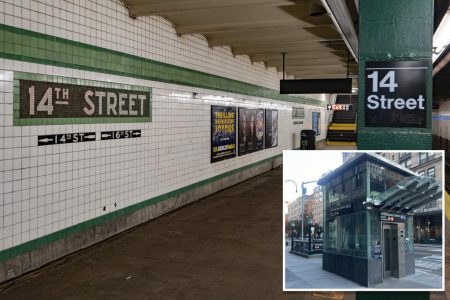The implementation of Manhattan’s congestion pricing plan has ignited a firestorm of controversy, pitting proponents of reduced traffic and improved public transit against critics who decry the new tolls as an economically devastating burden. As of midnight on Sunday, drivers entering Manhattan below 60th Street now face a $9 fee during peak hours, a first-in-the-nation initiative aimed at discouraging vehicular traffic in the city’s core. The varying toll rates, with lower charges for off-peak hours and differing fees for trucks and motorcycles, reflect an attempt to balance revenue generation with traffic management. While some drivers expressed resignation to the inevitable, others voiced outrage and frustration at the added expense, viewing it as another blow to a city already grappling with rising costs and economic challenges.
The immediate reactions to the congestion pricing plan range from acceptance to fury. While some drivers acknowledge the potential benefits of reduced traffic, many expressed strong opposition, viewing the new tolls as an unfair burden on commuters and a potential detriment to local businesses. Personal stories emerged, highlighting the diverse impacts of the new fees. A former city resident who moved to New Jersey to avoid public transit now faces the prospect of increased commuting costs, questioning the viability of driving into the city. Ride-sharing drivers anticipate passing the increased expenses on to passengers, effectively penalizing those reliant on these services. Despite these negative sentiments, some, particularly ride-sharing drivers who navigate the city’s congested streets daily, expressed optimism about the potential for improved traffic flow.
The political backdrop to the congestion pricing rollout is fraught with tension. Governor Kathy Hochul’s push to implement the plan before the presidential transition was met with resistance from politicians and residents alike, who raised concerns about the potential economic ramifications. Critics, including Congressman Nicole Malliotakis, argue that the tolls will discourage visitors from venturing into Manhattan, negatively impacting businesses and the city’s overall economy. This concern is echoed by residents who fear that the added expense will deter people from frequenting businesses below 60th Street, leading to a decline in patronage and potentially forcing closures. The political maneuvering surrounding the plan highlights the delicate balance between addressing traffic congestion and mitigating the potential economic fallout.
The Metropolitan Transportation Authority (MTA), the driving force behind the congestion pricing plan, frames the initiative as a necessary step to address two critical issues: reducing pollution caused by traffic and securing funding for vital public transit improvements. The projected $15 billion in revenue generated by the tolls is earmarked for projects such as expanding the Second Avenue subway, upgrading signals, and purchasing electric buses. The MTA has incorporated provisions to mitigate the impact on lower-income drivers, offering a discount for those earning less than $50,000 annually and a credit for EZPass users entering the toll zone through specific tunnels during peak hours. These measures aim to address concerns about the regressive nature of the tolls and ensure equitable access to the city.
Despite the MTA’s efforts to address concerns, opposition to the congestion pricing plan remains strong, fueled by anxieties about the potential negative consequences. Criticisms range from the perceived unfairness of burdening commuters with additional costs to the fear of further decline in already struggling neighborhoods. For instance, Chinatown activists express concern about the impact on deliveries and customer accessibility, potentially jeopardizing the viability of local businesses. Furthermore, the safety of the subway system, a key alternative to driving, remains a concern for many, highlighting the need for improvements and enhanced security measures. These concerns underscore the complex interplay between transportation policy, economic viability, and public safety.
The legal challenges to the congestion pricing plan, coupled with the concurrent toll increases by the Port Authority, further complicate the situation. Multiple lawsuits seek to halt the implementation of the tolls, arguing against their economic impact and questioning their legality. The rejection of New Jersey’s emergency request to stop the program underscores the difficulty of reversing course once the plan is in motion. The simultaneous increase in Port Authority bridge and tunnel tolls adds another layer of cost for commuters, exacerbating concerns about the overall financial burden on drivers. These legal battles and added costs contribute to the ongoing debate surrounding congestion pricing, highlighting the complexities of implementing such a significant policy change.










